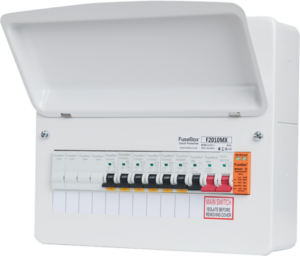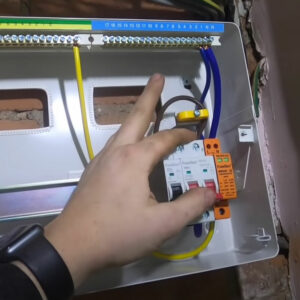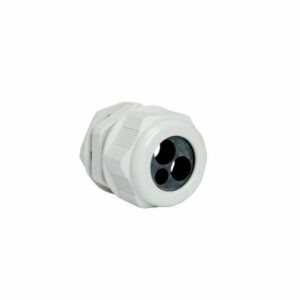How to Order a FuseBox Consumer Unit Like a Pro
Welcome to our comprehensive guide on FuseBox consumer units, the unsung heroes of your electrical distribution system. We'll delve into the significance of consumer units, explore the benefits of RCBOs (Residual Current Circuit Breaker with Overload Protection) and shed light on the formidable surge protection offered by FuseBox.
Whether you're replacing an older consumer unit or embarking on a new installation, this guide will equip you with the knowledge you need to navigate the world of consumer units like a pro.
What does a Consumer Unit Do?
A consumer unit, also known as a fuse box or fuse board is the heart of your electrical distribution system. It is responsible for distributing electricity to all the circuits around your home or business. From power sockets to lighting, this is the main hub that connects the incoming electrical supply from the power grid into your home.

While they’re often referred to a distribution board, a consumer unit operates on single phase and a distribution board operates on 3 phase. Distribution boards are mainly used in commercial buildings which have a 3 phase supply.
Other terms used to describe a consumer unit are fuse board and fuse box. The word fuse is used because they used to contain fuses instead of MCBs (Miniature Circuit Breakers) or RCBOs. There is also a brand called FuseBox who manufactures circuit protection equipment.
FuseBox consumer units are widely regarded as the best in the business. This is due to the formidable level of protection they offer, ample wiring space and affordable price of not only the board itself, but also the MCBs and RCBOs.
Replacing Older Consumer Units
Older consumer units used to be constructed from plastic which are no longer compliant with the 18th Edition Regulations. This is because they pose a fire hazard and now need to be constructed from non-combustible steel. Although its not yet a legal requirement to upgrade existing plastic ones, any new installations must be with metal consumer units.
RCBO Consumer Units
RCBO consumer units from FuseBox are the ideal choice of upgrade. The built in surge protected design comes with a Type 2 SPD (Surge Protection Device) and main switch, the SPD is also protected by an MCB (Miniature Circuit Breaker). These incoming devices take up a total 4 ways.
The main advantage of using RCBOs instead of MCBs is that all of your circuits are individually RCD (Residual Circuit Device) protected, which is why you don’t need an RCD incoming device or split load consumer unit. An RCBO has residual and overload protection in one neat device.

This combination of a surge protected board and RCBO circuit breakers offers almost the most comprehensive level of protection you can get. The only way of improving on this would be to use AFDDs (Arc Fault Detection Device) instead of RCBOs.
AFDDs have combined RCD and arc fault detection in one. They are a newer design of circuit breaker that can help to prevent electrical fires. AFDDs work by detecting arcs, which are small electrical currents that can occur when 2 conductors come into contact with each other. When an arc is detected, the AFDD will trip the circuit and shut off the power. Using AFDDs will really add to your project costs and aren’t yet a legal requirement for homes.
Flexible Tails
Flexible tails cables will make your wiring much easier than traditional 6181Y cables. This is another pro tip especially for new installations. You might struggle to replace tails cables with existing installations. Tails kits are available that include 25mm blue, 25mm brown and a 16mm earth, available in 1, 2 or 3 metre lengths.

Tails Clamp
Now supplied as standard with all of the FuseBox SPD boards. Tail clamps help to secure the incoming tails cables into the board for a neater and more secure finish.

Tails Gland
Something that isn’t supplied as standard but comes in handy is the FuseBox 32mm consumer unit tails gland. It has a nylon insert with entries for your 25mm tails cables and 16mm earth cable. This gives you one neat entry point for your incoming power cables.

How Many Ways?
A typical home will need between 10 and 20 circuits. If you’re upgrading an existing consumer unit, your electrician should recommend which size of board to upgrade to as the wiring might not meet the latest regulations, some existing circuits might be split up into separate RCBO circuits.
FuseBox SPD boards are available in 7 frame sizes which range from 6 to 44 useable ways. With single, double and triple row options to choose from. While cost is always an important factor, you should also consider having some spare useable ways available to ensure your distribution network is future proof, you may need to add an EV (Electric Vehicle) charger, solar panels, air conditioning and other electrical circuits in the future.
If you can physically fit a bigger board, then consider doing so and fit some blanks until you need to populate it with more RCBOs. FuseBox blank modules look just like MCBs which conveniently match the design of the consumer unit.

Can I Fit a New Consumer Unit Myself?
Consumer unit installations must be completed by a qualified electrician, this is a legal requirement due to the dangers involved.
Further Viewing
For further information about FuseBox consumer units, find out how internet sensation Nick Bundy installs them in this video walk-through, which also features a secret discount code that you can use on our website.
By following these tips, you can ensure that you order a FuseBox that will keep your home or business safe and secure for many years to come.




